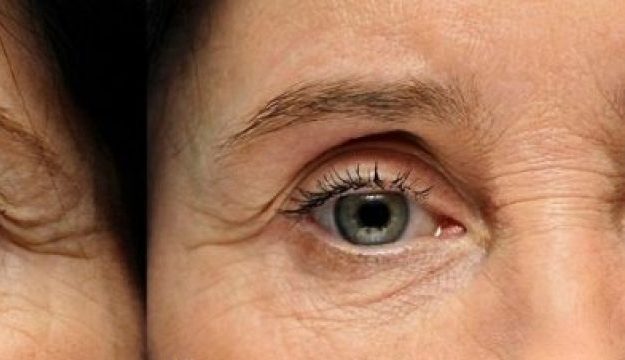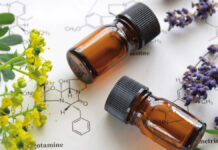Streszczenie
Celem badań była ocena stopnia wpływu czynników genetycznych i środowiskowych na dziewięć parametrów czynnościowych skóry twarzy u kobiet w wieku postmenopauzalnym. Analizowano jej strukturę, poziom natłuszczenia, złuszczanie, wielkość porów i naczynek, nasilenie przebarwień, szerokość zmarszczek oraz nawilżenie strefy T i U części środkowej czoła oraz policzka. Dodatkowo oceniono wielkość i kierunek korelacji tych cech z wiekiem, wysokością i masą ciała, wskaźnikiem masy ciała BMI (Body Mass Index), a także wzajemne związki badanych parametrów skóry.
Występowanie przebarwień oraz nawilżenie stref twarzy T i U są w największym stopniu podatne na czynniki środowiskowe. Natłuszczenie, pory i struktura skóry są najsilniej determinowane genetycznie. Złuszczanie, naczynka i zmarszczki mają zbliżony udział komponenty genetycznej i środowiskowej. Z wiekiem następuje istotne pogorszenie niektórych parametrów skóry; pogarsza się jej struktura, wzrasta skłonność do przebarwień i zmarszczek oraz zmniejsza się nawilżenie strefy T. Wysokość ciała nie koreluje z żadnym z badanych parametrów skóry. Bezwzględna i względna (BMI) masa ciała słabo koreluje tylko z wielkością porów. Im gorsza jest struktura skóry, tym większe są zmarszczki i przebarwienia, a mniejsze nawilżenie strefy T. Większe natłuszczenie skóry koreluje dodatnio ze skłonnością do powstawania naczynek, natomiast ujemnie z nawilżeniem strefy U. Ze wzrostem nawilżenia strefy U zwiększa się nawilżenie strefy T, a maleje wielkość naczynek i zmarszczek. Dobre nawilżenie strefy T powoduje zmniejszenie zmarszczek i przebarwień. Wielkość zmarszczek koreluje dodatnio ze skłonnością do występowania naczynek.
Słowa kluczowe: skóra twarzy, starzenie skóry, wskaźnik masy ciała, BMI, korelacje parametrów skóry, genetyczna determinacja właściwości skóry
Genetic and environmental determinants of facial skin parameters in women over 45 and their correlations with age and BMI
Abstract
The aim of this study was to assess the degree of influence of genetic and environmental factors on nine functional parameters of the facial skin in postmenopausal women. The structure, level of oiling, exfoliation, pore size and blood vessels, the severity of discoloration, the width of wrinkles and hydration zone T and U the central part of the forehead and cheek were a subject of analysis. Additionally, correlation size and direction of these parameters were compared with age, body weight and height, and body mass index (BMI) as well as interrelationships between the studied parameters of the skin.
The occurrence of discolorations and hydration of zone T and U are most sensitive to environmental factors. The level of oiling, pores and skin structure are at most genetically determined. Exfoliation, skin capillaries and wrinkles have a similar share of genetic and environmental components. With age, some parameters of the skin statistically significantly deteriorate; its structure worsens, size of discoloration and wrinkles increase and hydration of T-zone reduces. The body height does not correlate with any of tested parameters of the skin. The absolute and relative (BMI) body mass correlates poorly with only the size of pores. The worse the structure of the skin, the more wrinkles and discolorations and smaller hydration of T-zone. Larger level of oiling of the skin positively correlates with a tendency to the formation of skin capillaries and negatively correlates with hydration of U-zone, at the same time. With the increase of hydration U-zone, hydration of the T-zone increases and the size of skin capillaries and wrinkles decreases. Good hydration of T-zone reduces wrinkles and discolorations. The size of wrinkles correlates positively with the tendency to occurrence of the skin capillaries.
Key words: facial skin, skin aging, Body Mass Index, BMI, correlations between parameters of the skin, genetic determination of the skin properties
Krzysztof Borysławski (1), Kamila Dudek (2)
(1) Katedra Antropologii
Uniwersytet Przyrodniczy we Wrocławiu
ul. Kożuchowska 5
51-631 Wrocław
M: +48 693 082 508
E: krzysztof.boryslawski@upwr.edu.pl
(2) Instytut Zdrowia
Państwowa Wyższa
Szkoła Zawodowa
im. Angelusa Silesiusa
ul. Zamkowa 4
58-300 Wałbrzych
M: +48 786 832 694
E: kamila.dudek2704@gmail.com




